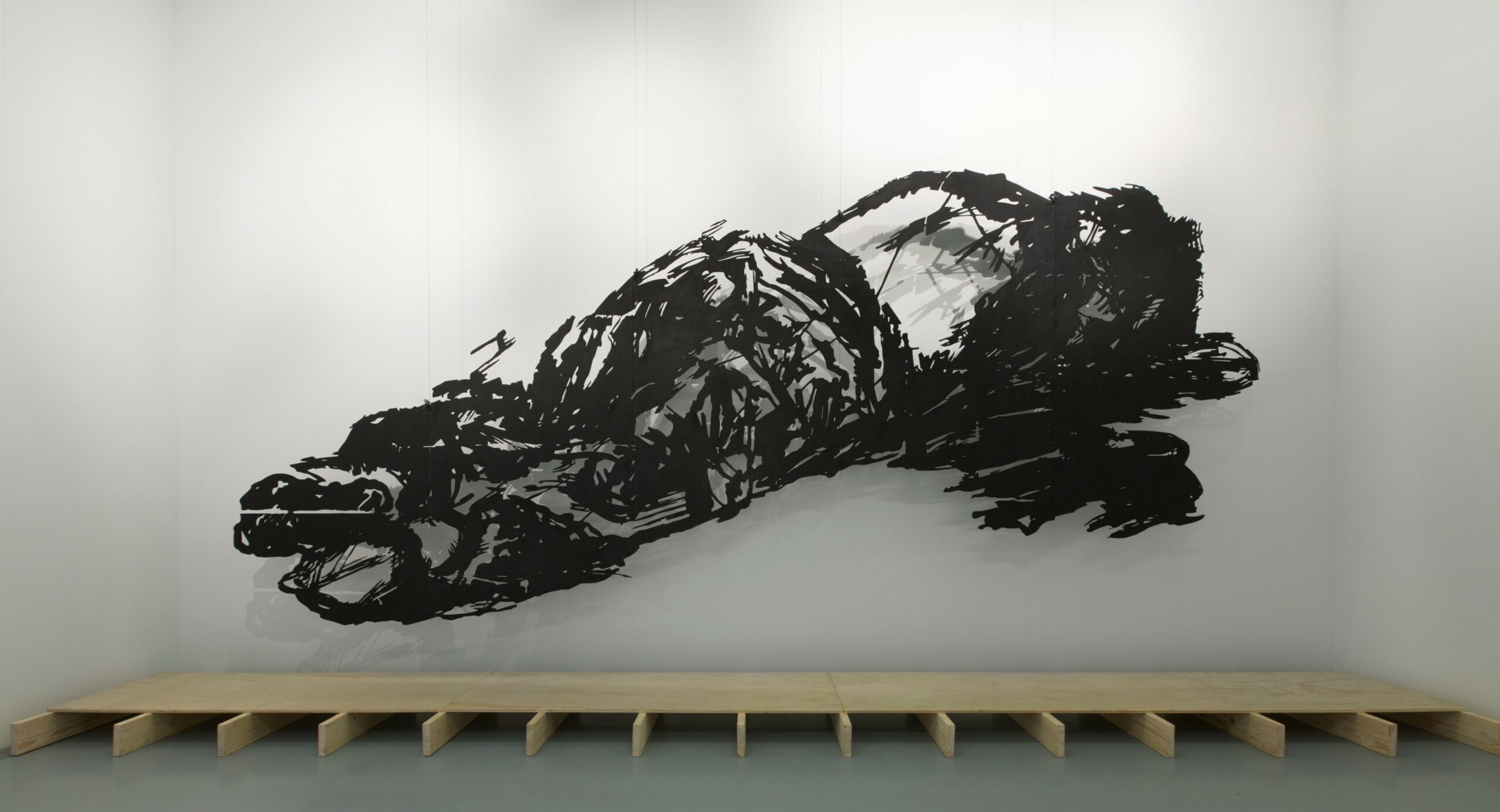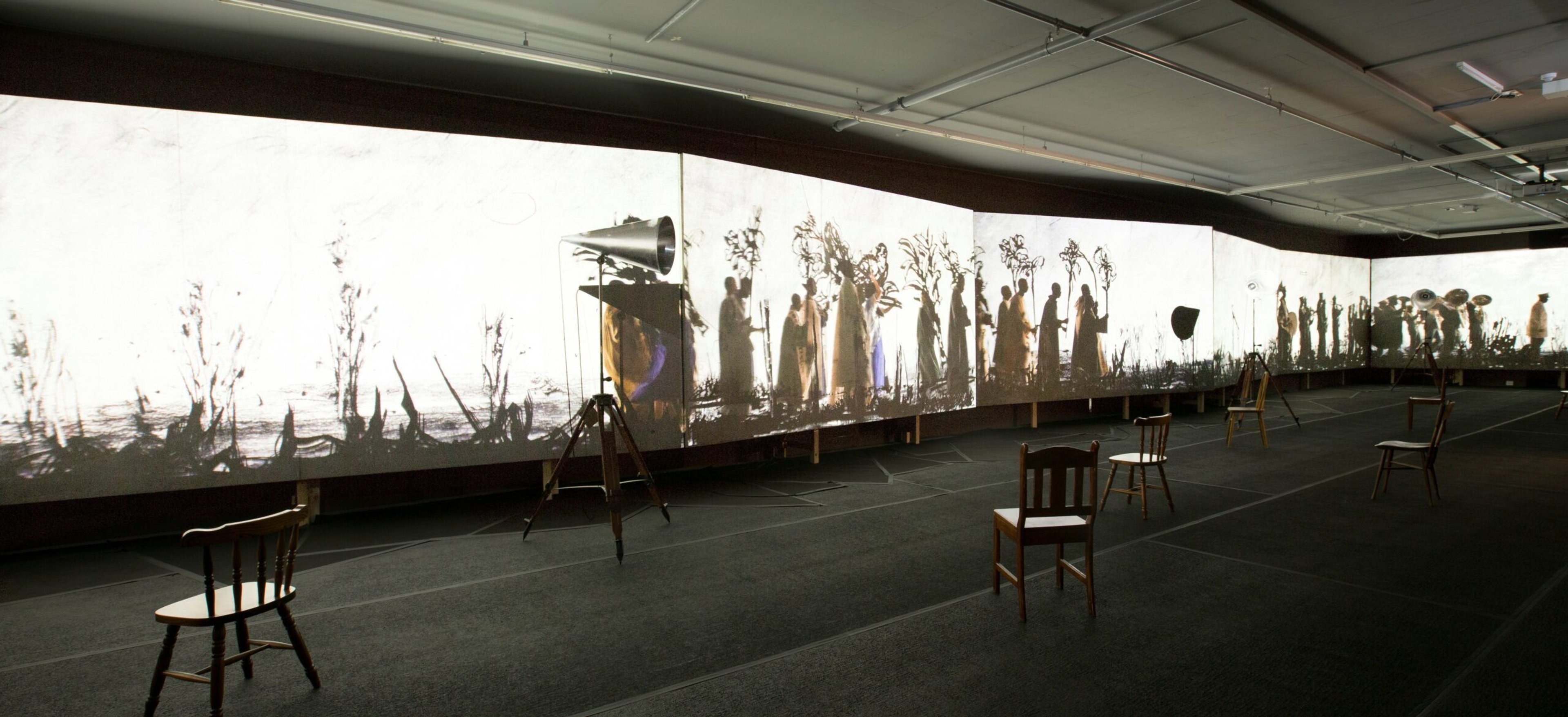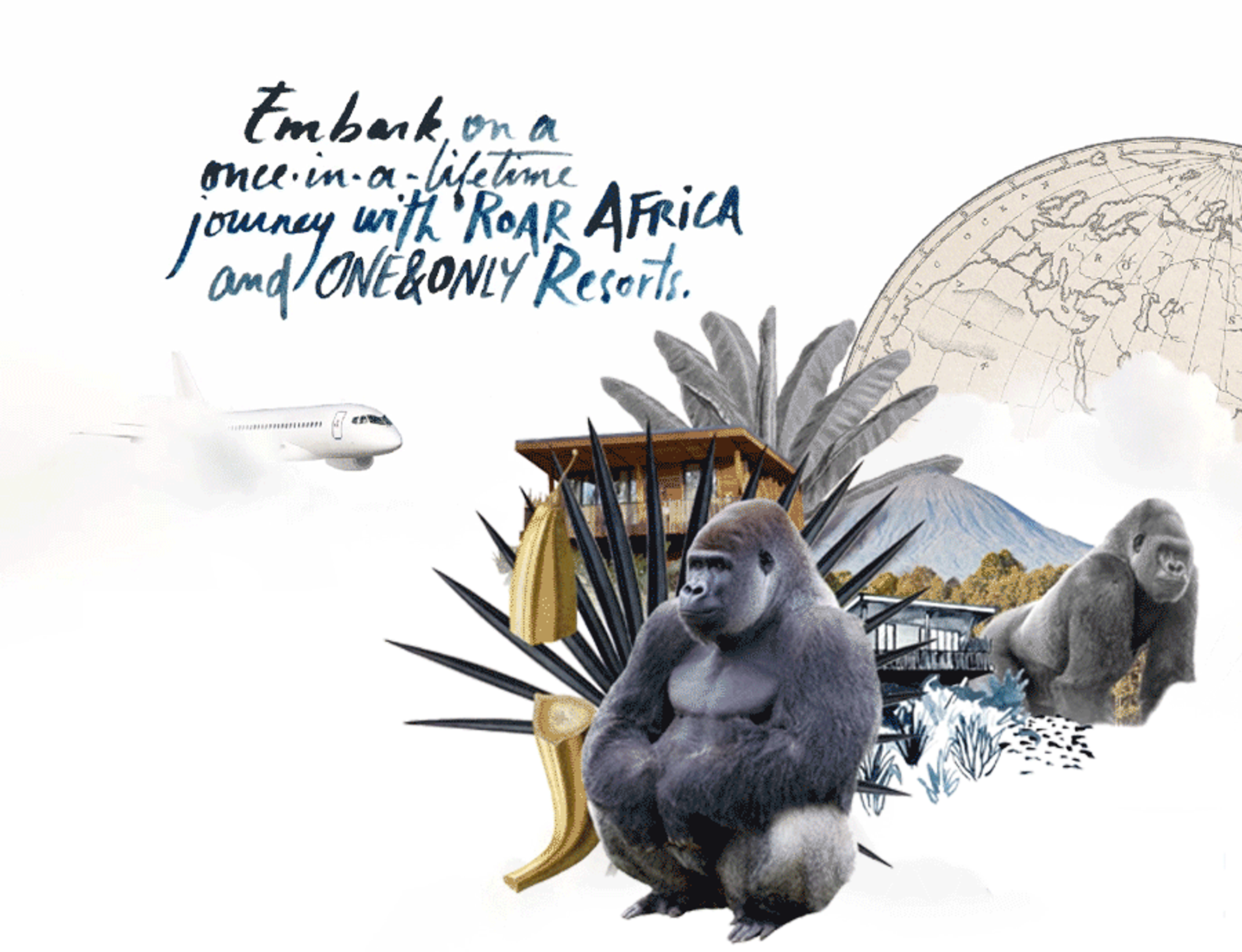I love Kentridge’s monochromatic signature style and so I made it my mission to visit the Norval Foundation last year in August when it opened. Created specifically for the large vaulted gallery at Norval, I was particularly taken with his crude yet outsized 11 ft black bronze sculptures. They are spectacular and incongruous without doubt – an ampersand, a coffee pot, a camera – all monumental, humorous, and disruptive in that they leave you wondering at their meaning. Which of course, is exactly as the artist intended.
It was only when I went to his exhibition at the Zeitz MOCAA in Cape Town a few weeks ago that I got a better understanding of Kentridge’s oeuvre. My timing couldn’t have been better for not only was my tour guide Tammy Langtry, Zeitz’s Assistant Curator who worked closely with Kentridge’s studio in setting up this exhibition, but the legendary activist Albie Sachs was a surprise guest.
For those of you not familiar with Albie, he’s a former Constitutional Court Judge and a key member of the team that drafted South Africa’s Constitution in 1996. He also lost an arm in a car bomb in Mozambique and – at 84 – is working on a museum on The Constitution. As a close friend of the Kentridge family, Albie’s insights into William as a person were invaluable to my experience. He regaled us with tales of William’s mother, Felicia Kentridge, who was the first woman lawyer in South Africa, an inconceivable notion for the time. “How will we have our conversations if there are women allowed in here!”, the gentleman’s club were heard to lament. “She was a real path breaker”, says Albie of Felicia, who co-founded the Legal Resources Center in 1979 that represented many black activists. William’s father, Sir Sidney was an advocate and a judge and a leading lawyer in Steve Biko’s murder trial, as well as one of the leading lawyers in the Treason Trial, where he represented Nelson Mandela and the other 155 activists. “He is 95 today”, says Albie. “He retired from practice last year as he thought 94 was a good age to stop working.” He then said with a laugh, “These days though, Sir Sidney says he is best known as William’s dad.”
The Zeitz exhibition is a comprehensive biography of Kentridge’s drawings from the 1970s to the present day offering an appreciation for his prolific output and the development of his drawing technique. Tammy explained how Kentridge believes that the viewer has to step up to a drawing and meet it with one’s own experience and perceptions. His use of profound phrases that provoke imagery make this especially true in that the phrases are more like riddles, not solvable to the viewer but giving hints to an alternate way of making sense of them.
This comes across particularly in his 2013 work, Remembering the Treason Trial, a charcoal of a large tree drawn on a book of 63 panels that fold out. Kentridge sees trees as holding memory, their quiet presence witnesses to history as they watch generations pass underneath them. Among the branches are seemingly unrelated phrases like “the invention of Africa” and, “while peeling an egg”. Yet Tammy tells us that growing up, the Kentridge family had a large pine tree at the bottom of their garden beneath which sat a table with a tile top. Whenever his parents spoke of the Treason Trial, William (who was between 3 and 6 years old at the time of the trial), heard them say “the trees and tile”. Consequently, he thought his father was going to work somewhere in the garden, possibly having a picnic under the tree.
Among my favorites were three posters, Art in a State of Grace, Art in a State of Siege, and Art in a State of Hope, which Kentridge created as part of a commission for Johannesburg’s centenary. Art in a State of Grace shows the gluttonous industrialist Soho Eckstein, an alter-ego he uses often, with the slogan “100 years of Easy Living”. Art in a State of Siege shows a beautiful woman with a fish on her head as an elaborate head piece, while holding an empty plate. Should art provide nourishment or is it only something to be admired? Then there’s Art in a State of Hope, an empty stadium and an abandoned microphone. Are the people coming back? Is this the beginning of something, or the end? Considering this was 1988, it can’t have been what the organizers had hoped for. Meant to be showcased in a guerrilla-like campaign around the city, they were shelved.
It was fascinating having Albie on the tour to add his thoughts and memories of the struggle. He spoke about how risky it was for Kentridge to use the Soho character, a Jewish capitalist who exploits workers that slave and starve as he feasts, especially as Kentridge himself is Jewish. His other alter-ego character is Felix Teitelbaum, the gentle artist and Soho’s antithesis. “He is Felix”, says Albie, “but many of his friends and family were businessman like Soho, working the system and taking what they could get.”
Downstairs in the Zeitz Moving Image Lab, five of the 9 Drawings for Projection films done between 1989 and 2011 feature Soho and Felix. Kentridge uses stop-frame animation to make the films. He starts by drawing a charcoal and pastel image on a large sheet, then he photographs it and changes the image slightly. He does this thousands of times to create a moving image. Tammy explains that he begins the process with an idea and then the story develops organically as he sees how an image can become another image by erasing or adding to it. He can record on the same sheet of paper up to 500 times. As one can never completely erase charcoal from the page, a shadow of the old image remains – the memory.





